| 4th Grade | |||||||
| |||||||
Translate Page |
4th Grade Science Units:
- Physical Science: Energy
- Physical Science: Waves and Information
- Life Science: Structure and Function & Information Processing
- Earth and Space Science: Earth's Systems: Processes that Shape the Earth
Student Research
-
Journey North Online Projects
-
Study Jams - Scholastic
1. Energy

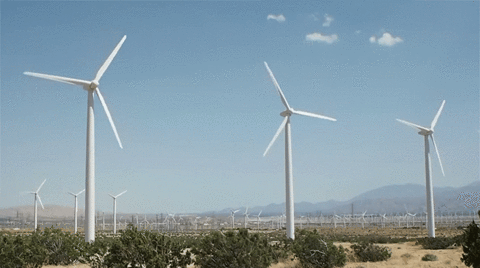
ROLLER COASTERS
- Potential and Kinetic Energy - Try 1st animation
- Amusement Park Physics - interactives
- Build your own coaster - Discovery
SIMULATIONS
- Force & motion: Basics PHet at University of Colorado
- Skateboarder - PHet
ADVANCED
- Leonardo DaVinci - Mystery Machines - Museum of Science
- Break it down - Science Letlinks
ELECTRICITY
- The Blobz Guide to Electric Circuits - Andy Thelwell
- Make an Electric Circuit Online
- Circuit Builder by BBC.co.uk
- Build A Circuit
- Circuit Construction Kit - PhET simulations
- Electricity
Information about electricity - 7. Electricity
Theater of electricity - everything you wanted to know about electricity - Static Electricity with Balloons
Simple experiment to demonstrate how static electricity is caused by electron buildup - More Static Electricity with Balloons
More experiments to reinforce the ideas of static electricity.
TEACHER
- What is energy? - video - Learner
- Forces & Motion - Ms. D
- Physics study -
UNIT VOCABULARY
- motion - when an object is moving, it is in motion
- transfer - to transfer is to pass from one object to another
- vibrations - rapid back-and-forth movements
- transform - to transform is to change
- thermal energy - thermal energy is the energy of heat
- electrical energy - electrical energy is the energy of charged particles
- electric current - electrical current is the transfer of electrical energy through a material
- electric circuit - an electric circuit is a complete path through which an electric current can pass
- energy of motion - energy of motion is the energy that is present when an object moves
- fossil fuel - a fossil fuel is a source of energy that formed from the remains of plants and animals that lived millions of years ago
- nonrenewable energy resource - a nonrenewable energy source is an energy source that will eventually run out
- renewable energy resources - a renewable energy source is an energy source that will never run out
- solar energy - solar energy is heat and light energy from the sun
- wind energy - wind energy is from the wind
TEACHER RESOURCES
- NSTA Next Generation Sci Standards: topics * Learning Center * Classroom Resources
- Discovery videos and lesson ideas
- Open Ed - Background and lesson
- The Science Spot lessons
- Learning in Action
- NJ Center for Teaching & Learning
- Brainpop
- Teach Engineering
SUGGESTED ACTIVITIES
- Motion - Bill Nye the Science Guy
- BRAINPOP -Forms of Energy, Energy Sources & Conserving Energy
- Spool Racers - Popcan Porche * Rubberband Car PBS
- Energy Makes Things Happen - Harness the Wind
- Design a Lunar Thermos
- Sled Wars
- Squishy Circuits
- Feel the Heat
- Transfer of Energy
- Community Utilities
- Teaching Engineering
2. Waves and Information

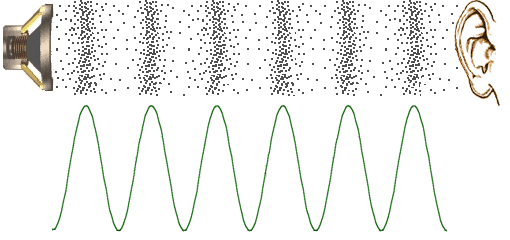
- Wave Combinator - Brainpop
- PHET Waves on a String
- Concord Activity - How Loud, How High? - online simulations
Sound
- Let's hear it for the ear
Info on outer, middle, and inner ear diagram - The Five Senses
- Radio Transmission by PBS
- Hearing Frequency and Volume Gizmo by Explore Learning
- Singing Ice - Skunk Bear
- The Sound of a Clap look like? ... and a sneeze - Skunk Bear
- MORSE CODE Translator * Morse code vs. texting
TEACHER
- Sound Unit
- Science of Light - Learner
VOCABULARY
- wave - a wave transfers energy from one place or object to another
- amplitude - amplitude is the distance between the crest or trough and the middle point of waves
- wavelength - a wavelength is the distance from one crest to the next crest in a wave
- digitize - to digitize means to put information in digital code form
- Global Positioning System (GPS) - a Global Positioning System is a tool that uses satellites to locate positions
- transmit - to transmit means to send
TEACHER RESOURCES
- NSTA Next Generation Sci Standards: topics * Learning Center * Classroom Resources
- Discovery videos and lesson ideas
- Open Ed - Background and lesson
- The Science Spot lessons
- Learning in Action
- NJ Center for Teaching & Learning
- Brainpop
- Teach Engineering
SUGGESTED ACTIVITIES
- Brainpop - Waves - Water, Sound, Light and Earthquakes
- Making Waves - How does energy move thorugh water?
- Energy and waves bite
- What are Waves?
- Simon says big amplitude, small wavelength
- Pop Bottle Waves and Hair Dryer Ripples
- Speaking in Phases - NASA radio waves
- Make some waves
- Surf's Up
3. Structure, Function & Information Processing

-
Fastball Reaction Time - Exploratorium
-
Red Light, Green Light - Chudler
-
Zap Reaction Time - Sciencenetlinks
VOCABULARY
- external- parts of an organism that are visible
- function- the kind of action or activity specific to a thing
- internal- parts of an organism found within an organism
- organism- a unit of life, an individual plant or animal or single cell structure
- reproduction - how an organism produces offspring
- sensory system - how an organism makes sense of their environment
- structure- anything composed of parts, arranged together, parts of an organism
- survival- the process by which an organism exists
TEACHER RESOURCES
- NSTA Next Generation Sci Standards: topics * Learning Center * Classroom Resources
- Discovery videos and lesson ideas
- Open Ed - Background and lesson
- The Science Spot lessons
- Learning in Action
- NJ Center for Teaching & Learning
- Brainpop
- Teach Engineering
- TinkerCAD
SUGGESTED ACTIVITIES
- Monster Plants
- Create your own insect
- Mouth Structures
- Are two eyes better than one?
- Sense of touch
- Animal Senses
- Animal Ears
- Blind spot
- Eyes on the ball
- Who turned off the lights?
4. Earth's Systems-
Processes that Shape the Earth

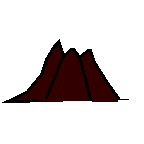
VOCABULARY
- boundary- a dividing line
- deposition- occurs when eroded sediments are dropped in another location, ending the process of erosion
- rate of deposition- the speed at which deposition occurs
- earthquake- a sudden shaking of the ground caused by the movement of rock
- Underground
- erosion- the process by which wind, water, ice, gravity, or other natural forces move sediment over Earth's surface
- flood- an overflowing of a large amount of water beyond its normal confines
- fossil- a trace of a plant or animal that lived long ago
- glacier- a large mass of ice resting on, or overlapping a land surface
- hazard- a danger or risk
- landforms- a large natural structure on the earth's surface such as a mountain, a plain, or a valley
- landscape- all the visible features of an area of countryside or land
- minerals- natural, nonliving solid crystal that makes up rocks
- plate tectonics- the individual plates that Earth’s crust is made up of. These plates move gradually in relation to each other and much of the Earth’s seismic activity occurs at the boundaries or edges of these plates.
- sediment- any eroded material (weathered rock, sand, and/or soil) that is carried from one place to another by a medium such as wind or water.
- topographic maps- provides detailed graphic representation of relatively small areas on the ground.
- tsunami- a damaging type of fast-moving water wave that forms when a sudden force, such as an undersea earthquake or landslide, shifts massive amounts of water.
- vegetation- plant life that grows in a certain area
- volcanic eruption- when magma and gases that have been blocked in chambers under
- the Earth's surface burst through the top of a volcano
- weathering- the natural breakdown of rocks into smaller fragments. Water, wind,
- and living things can all cause weathering.
TEACHER RESOURCES
- NSTA Next Generation Sci Standards: topics * Learning Center * Classroom Resources
- Discovery videos and lesson ideas
- Open Ed - Background and lesson
- The Science Spot lessons
- Learning in Action
- NJ Center for Teaching & Learning
- Brainpop
- Teach Engineering
SUGGESTED ACTIVITIES
- Erosion - Bill Nye
- Science Journal
- Weathering, Erosion and deposition - slideshow
- Brainpop Educational Resource
- Erosion by Rain - Kids Discover Activity
- The Science Penguin
- Engineering and the Three Little Pigs
MORE Science Links
Water Cycle ~ Weather 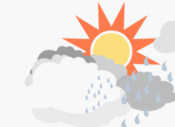
ORADELL WEATHER
THE WATER CYCLE
- Water Cycle Animation - NASA
- Evaporation, Condensation, Precipitation - Kidzone
- Watercycle - Scholastic > video & quiz
CLOUDS
- Clouds Types - Web Weather for Kids
WEATHER INSTRUMENTS
- Weather Instruments - Wizkids
- Weather Watch - Scholastic > OBSERVE clouds
ATMOSPHERE
Force & Motion 
SIMPLE Machines
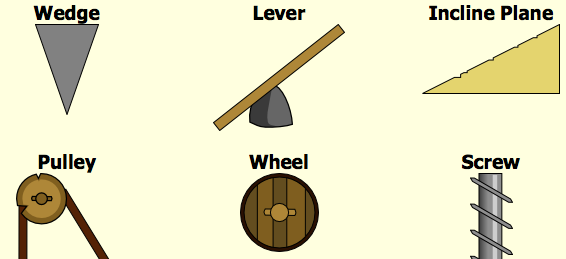
- Dog Goldberg Machine * Rube Goldberg - videos
- Simple Machines activity - Aspire
SCIENTIFIC EXPLANATIONS
TEST YOUR SKILLS
* My Physics Lab - simulations
* Rube Goldberg Burgler Stopper -Need Login - Foss
Light
Activities are included to investigate light and color
The concept of color can be approached from several disciplines: physiology, psychology, philosophy, and art.
This web site provides some starting points for an exploration of color.
Health
THE EYE
1. A BIG LOOK AT THE EYE -Kids Health
Take a tour of the many parts of the eye!
2. Sandlot Science - Contrast and illusions
3. Eye, Eye, Eye: Questions about the eye
Eye from all creatures
4. The Five Senses
See a cross-sectional view of the eye. The basic structures of the eye are explained.
6. Eye animation - Britannica
7 . Eye Anatomy
8. A KIDS' EYE SAFETY GUIDE
9. TAKING A GOOD LOOK AT GLASSES Kids Health
How corrective lenses can help us see better.
10. KEYSTONE BLIND ASSOCIATION
About eye safety, eye science, and the prevention of blindness!
11. Sandlot - Personal illusions
More Student Links

Human Body Systems
CELLS 
- Cell - Cells alive
- What is a Genome? - NIH.gov
- Cells Cells - Parts of the cell rap
- Animal cell - video
- The cell song - video
Five Senses - The Five Senses - Fact Monster
VIDEO & ANIMATIONS
* Movies KidsHealth
Health Animations - e-learning
* Science: Human Body & Mind
GENERAL FACTS
- Systems Overview & all ANIMAL SYSTEMS - Biology4kids
- How My Body Works with audio - KidsHealth
- Your Gross and Cool Body > Choose a body system
- Your Body's Systems - Fact Monster
- Body Systems - Franklin Institute
Circulatory
1. Your Heart & Circulatory System - Kids Health
2. Circulatory System - Hillendale Health
3. Blood - e-learning
Animations:
5. Circulatory System animations - NeoK12
6. Circulation Station - National Institute of Health
8. Blood Animation - UK
9. See the blood flow - Science Museum of Minn.ORGAN: HEART
ORGAN: KIDNEYS
Digestive
1. Digestive - enchanted learning
2. Digestive with audio - KidsHealth
3. Digestive System - Hillendale Health** Digestive Video - Neo K12
Animation & Quiz:
6. The Digestive System assemble & animation - Harcourt7. Digestion Animation - John Kitses
8. Explore Your Digestive System
9. Digestive System Builder
10. Digestion - Medtropolis
11. QUIZ Pathway to digestion - Hillendale Health
12. Digestive Quiz - Hillendale Health
13. QUIZ - KidsHealthORGAN: STOMACH
ORGAN: LIVER, PANCREAS & GALLBLADDER
Nervous
- Brain and Nervous - KidsHealth
- Nervous System - Hillendale Health
- Nervous - Discovery Kids
- How the Nervous System Works with Other Systems
ORGAN: BRAIN & SPINAL CORD
- Your Brain - Kid's Health
- Brain - enchanted learning
- Brain and cord health - Chudler
- Brain - Medtropolis
- Keeping Healthy - BBC
- Neuroscience for Kids - chudler
Respiratory
1. Your Lungs and Respiratory System - KidsHealth
2. Respitory System - Hillendale HealthAnimation
3. Breathing - Science Museum of Minn.ORGAN: LUNGS
* Your Lungs - Kid's healthSkeletal
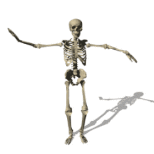
1. Human Skeleton - Enchanted learning
2. Human Skelton printout - Enchanted Learning
3 Your Bones - Kid's Health
4. Skeletal - Biology 4kids
5. Skeletal - Medtropolis
6. Human Skeletal System - bodysmartAnimation & Quiz
7. Know your bones - Hillendale Health
8. Bone Quiz - Hillendale Health
9. Skeletal - NeoK1210. Name Those Bones - youtube video
Muscular
1. Muscles - Biology4kids
Animation & Quiz
2. Muscular System - neoK12
3. The Muscle System Watch the beginning 2-3 minutes- neoK12
4. Muscle QUIZ - neoK12QUIZ
* Human Body Fast Facts - Kidsconnect
* Animal Systems Quiz - Biology4kids
* Body Systems Quiz - Hillendale Health
*. Body Systems Quiz - Hillendale Health
* Get Body Smart- Quiz
* Body Parts game - Smithsonian InstituteTeacher Research
- Body systems video >scroll down - neoK12
- Explore the Human Body - National Geographic
- Body Videos -Kidport > YouTube - Teacher
- Cardiovascular Videos - YouTube
- Interactive Body BBC



